LG V40 ThinQ vs. Galaxy Note 9: It’s Not Even Close
In the battle of big-screen phones, Samsung plays to win.
LG’s new flagship, the V40 ThinQ, sports a 6.4-inch OLED display, cameras powered by artificial intelligence and a $900+ price tag. This begs for a comparison to Samsung’s Galaxy Note 9, which also has a massive display, great cameras and also costs a small fortune.

Can LG compete with Samsung, the ruler of Android smartphones? We put both phones to the test to see which is worth your hundreds (and hundreds and hundreds) of dollars. Spoiler alert: the Note 9 wins by a lot.
LG V40 ThinQ vs. Galaxy Note 9: Specs Compared
| Row 0 - Cell 0 | LG V40 ThinQ | Galaxy Note 9 |
| Starting Price | $900-$980 | $999 |
| Processor | Snapdragon 845 | Snapdragon 845 |
| Screen | 6.4-inch OLED(3120 x 1440) | 6.4-inch AMOLED(2960 x 1440) |
| OS | Android Oreo 8.1 | Android Oreo 8.1 |
| RAM | 6GB | 6GB, 8GB |
| Storage | 64GB | 128GB, 512GB |
| microSD | Yes, up to 2TB | Yes, up to 512GB |
| Rear Camera | Triple lenses: 12-MP standard (f/1.5), 16-MP wide angle (f/1.9), 12-MP telephoto (f/2.4) | Dual 12-MP lenses (f/1.5 and f/2.4) |
| Front Camera | Dual lenses: 8 MP (f/1.9) and 5-MP wide angle (f/2.2) | 8 MP (f/1.7) |
| Battery Size | 3,300 mAh | 4,000 mAh |
| Battery Life (Hrs:Mins) | 8:48 | 11:26 |
| Water Resistance | IP68 | IP68 |
| Colors | Aurora Black, Moroccan Blue | Lavender Purple, Ocean Blue, Cloud Silver, Midnight Black |
| Size | 2.98 x 0.3 x 6.25 inches | 6.3 x 3 x 0.3 inches |
| Weight | 5.96 ounces | 7.1 ounces |
Design
The V40 and Note 9 are both shiny slabs of metal and glass, as most smartphones are in 2018. The Note 9 is particularly large, despite having the same 6.4-inch display the V40 does. Samsung’s giant flagship is 6.3 inches long to the V40’s 2.98-inch body, and at 3 inches across is a hair wider than V40’s 2.98-inch frame.
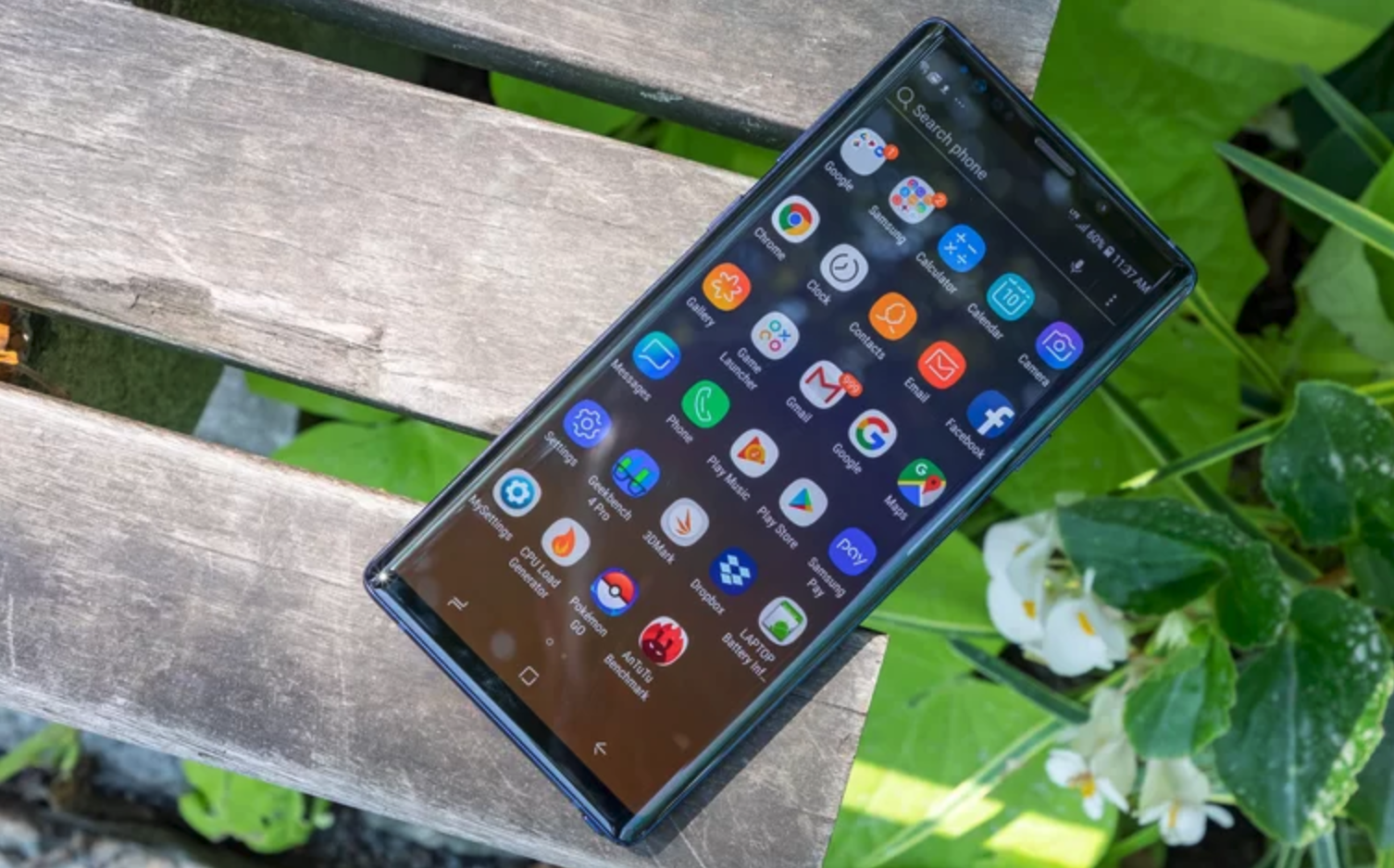
The Note 9’s rectangular shape has more squared off corners than the V40’s, which is rounded on all sides like an iPhone XS.
MORE: Best Big Phones
On the back, both phones appear to have the same horizontal camera array at first glance. A closer look reveals the V40’s array has three lenses (telephoto, standard and wide-angle), compares to the dual-lens set-up with flash on the Note 9. Both devices have fingerprint sensors in addition to front-facing facial recognition.

You’ll have more shades to choose from with the Note 9, which comes in four hues: lavender, blue, silver and black. The Ocean Blue shade also comes with a bright yellow stylus, which is a design quirk the V40 lacks. LG’s flagship plays it safe: the device comes in black and blue.
Get instant access to breaking news, the hottest reviews, great deals and helpful tips.

The Note 9 is overall heftier and larger than the V40, but also gives you more colors to choose from. This one is a tie.
Winner: Draw
Display
LG’s expansive 6.4-inch quad-HD display is a winner, with a higher resolution 3120 x 1440 OLED panel than the Note 9’s similarly sized 2960 x 1440 Super AMOLED screen.
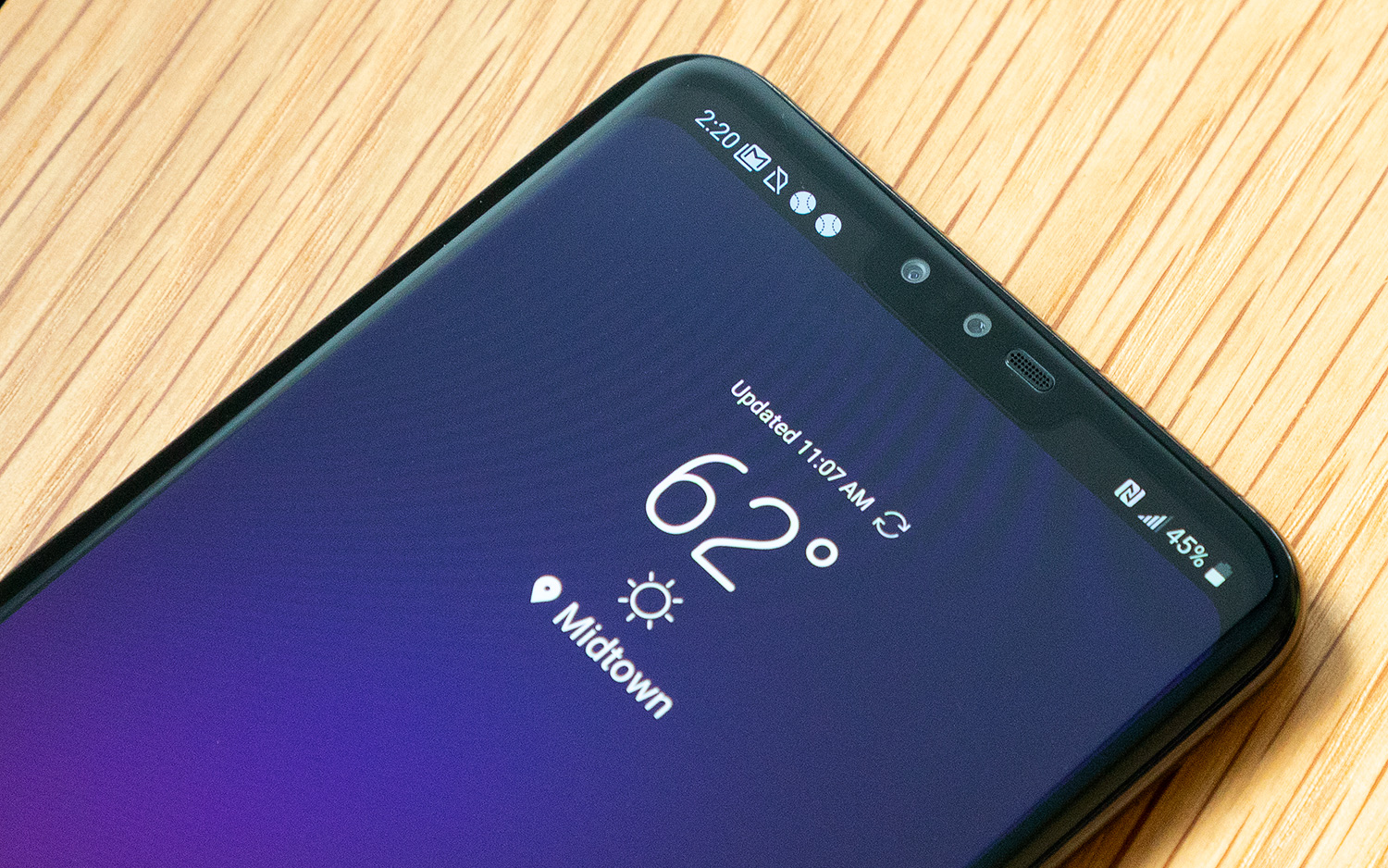
The Note 9’s display is brighter, more colorful and more true to life than the V40’s panel. Samsung’s flagship hit 604 nits on the light meter in our lab tests, compared to the V40’s 571 nits. The Note 9’s screen covers 224 percent of the sRGB color gamut, easily besting the 160.4 percent covered by the V40. On the Delta-E test of color accuracy, the V40 scored a 0.45, making it slightly less accurate than the Note 9’s 0.34 score. (Numbers closer to 0 are better.)
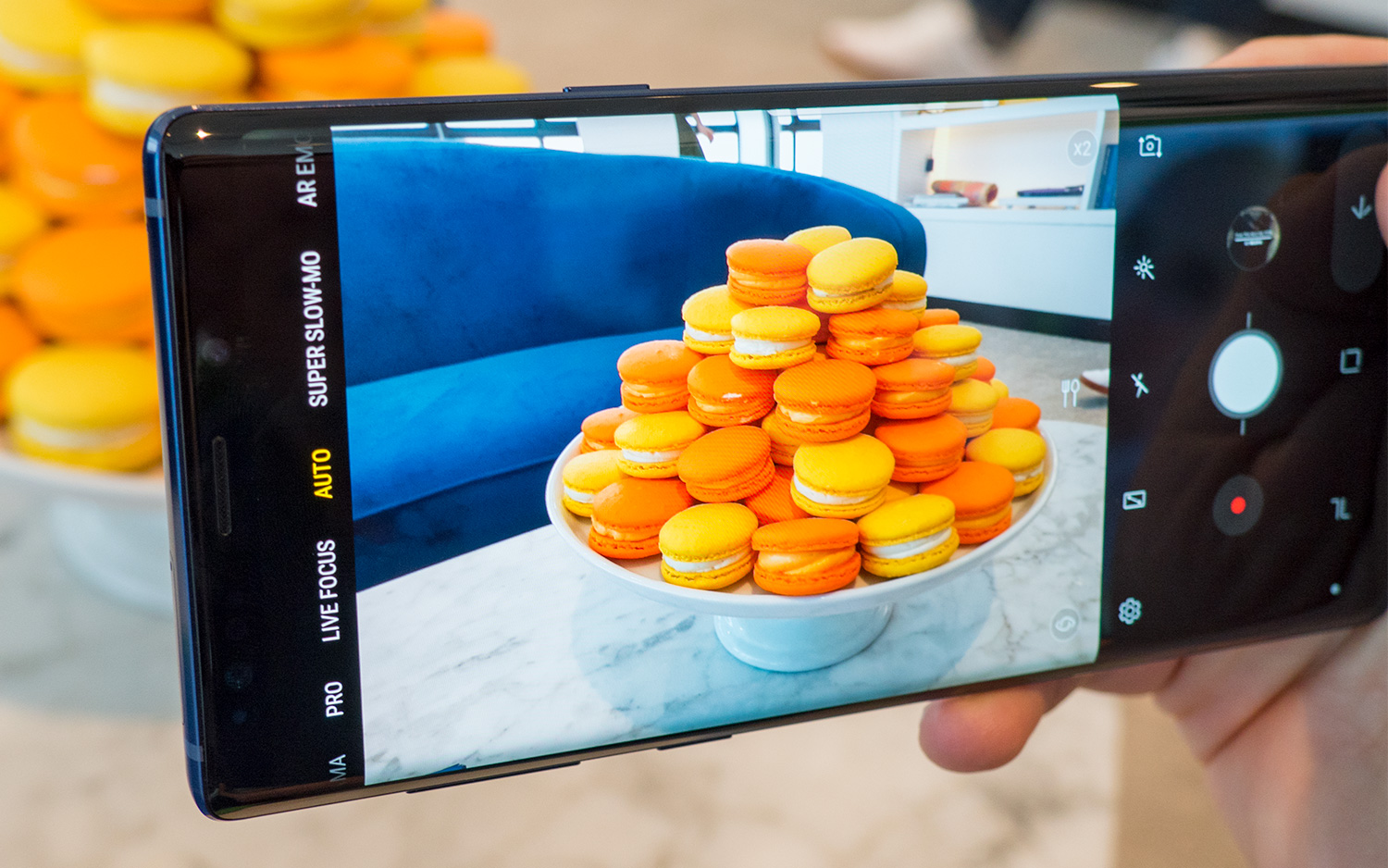
In day-to-day use, I prefer the Note 9’s Infinity Display, because the curved glass makes every video and game seem more immersive. The imagery practically cascades off the screen.
Winner: Note 9
Performance
Both the V40 ThinQ and Galaxy Note 9 sport Qualcomm’s latest Snapdragon 845 processor and 6GB of RAM, making them among the most powerful Android flagships on the market. (The OnePlus 6 and its 8GB of RAM still reign supreme.)

The Note 9 scored 8,876 on the Geekbench 4 test of overall system performance, compared to the V40’s score of 8,302.
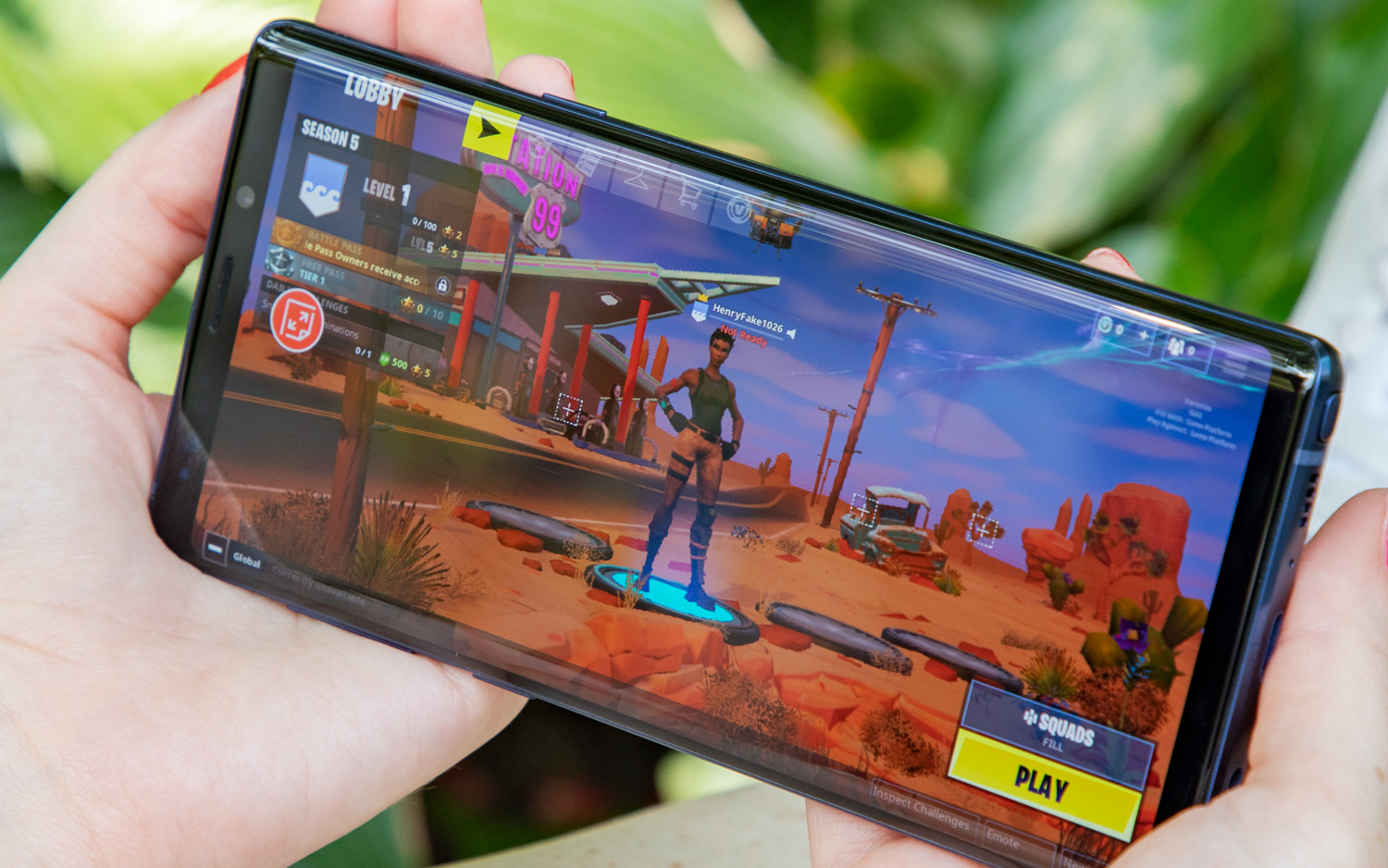
When it comes to graphics performance, the Note 9 easily pulled ahead of the V40 on 3DMark’s Slingshot Extreme 3.1 benchmark with a score of 4,639 compared to 3,461.
Both phones are strong performers, but the Note 9 has the edge.
Winner: Note 9
Cameras
The V40’s selling point is its camera — or cameras. Five of them, to be exact. LG’s latest has three lenses in the back, a telephoto, standard and wide-angle lens, and two lenses in the front (standard and wide-angle). The Note 9 has just three lenses: two in the back and one in the front.
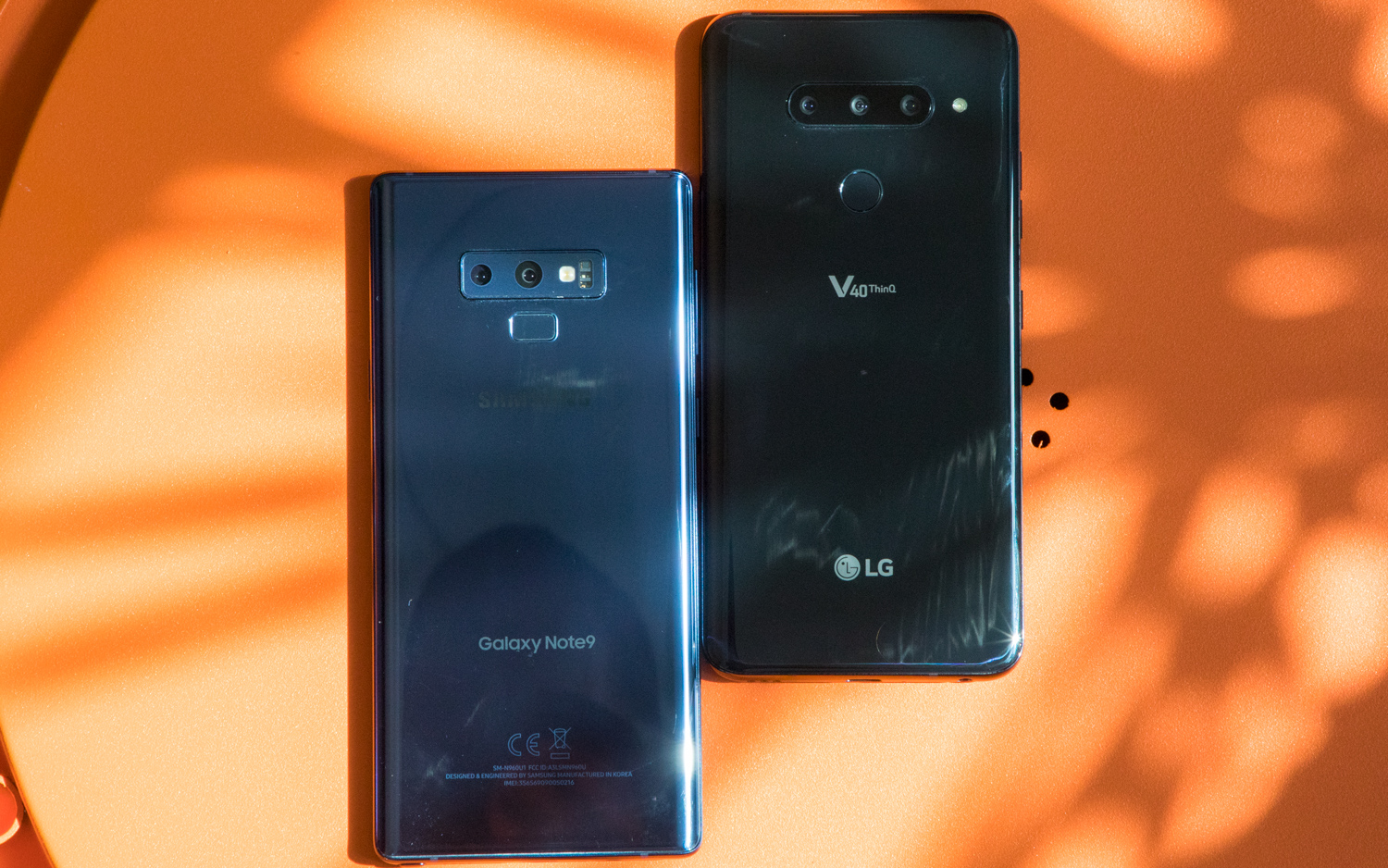
And yet the Note 9’s photos turned out consistently better than the V40’s when I put them to the test. The V40’s Triple Shot feature, which captures an image from each lens simultaneously and saves them separately, is a total crap shoot. You have to aim the camera at what you want to shoot and hope each lens has a good angle, because you can’t preview in Triple Shot mode. Most of the photos I shot using that feature were unremarkable.
I compared the V40’s telephoto lens with 2x optical zoom to the Note 9’s, and found that the the V40’s lens didn’t capture detail the way the Note 9’s did. In this shot of Charro, a Green Iguana at Houston’s butterfly conservatory, the Note 9’s optical zoom captures the details in the reptile’s orange scales, while the V40’s telephoto lens overexposes them.
Portrait mode was even worse. The V40 struggled to latch onto an object, such as a butterfly perched on a flower, and bring it into focus. The Note 9 had no issues creating a beautiful portrait of the butterfly.
Portrait selfies were also lackluster on the V40. In this outdoor shot, the V40 blew out the background so you can’t see the skyscrapers in the distance. The Note 9’s colors were more accurate.
Winner: Note 9
Special Features
The V40’s unique features are designed to make use of the phone’s five cameras. As mentioned above, I didn’t love the Triple Shot feature, but the V40 also lets you shoot cinemagraph-like images that move ever so slightly. That tool, called Cine Shot, uses any of the three rear lenses to record a 3-minute clip you can then animate by highlighting the area you want to move.

The Galaxy Note 9’s special features are productivity-focused. The S Pen can be used to take notes on the display or as a Bluetooth remote for the phone. With an adapter and an HDMI cable, you can project the Note’s screen to an external monitor and use the phone’s display as a touchpad.
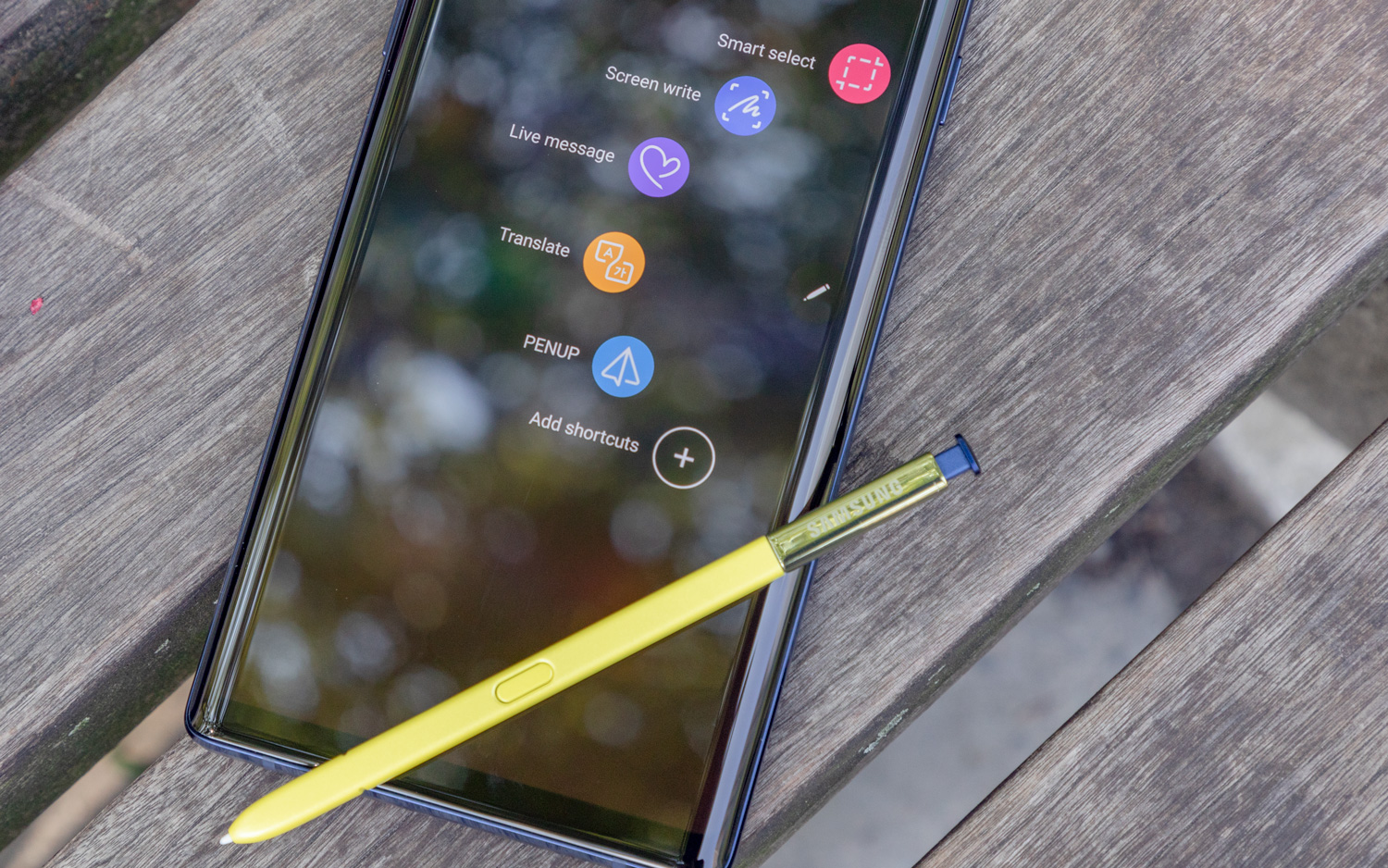
The V40’s unique photography features just don’t work all that well. The Note 9’s productivity tools elevate it to a near-perfect smartphone for power users. The winner is obvious.
Winner: Note 9
Battery Life
There’s no contest here: The Note 9’s 4,000 mAh battery easily beats the V40’s 3,300 mAh pack. The Note 9 lasted 11 hours and 26 minutes on the Tom’s Guide Battery Test, continuous web-surfing over T-Mobile LTE network, compared to the V40’s below-average 8:48 showing. That’s a nearly 2.5-hour difference, which is a huge deal for power users who are constantly using their phones.

Winner: Note 9
MORE: Smartphones with the Longest Battery Life
Price and Value
Both the V40 ThinQ and the Note 9 are expensive phones. The Note 9 starts at $999 for a 128GB model with 6GB of RAM. You can splurge on the pricier $1,249 version, which offers 512GB of storage and 8GB of RAM.
The V40 comes in one flavor, with 64GB of storage and 6GB of RAM, starting at $900 (up to $980 depending on carrier).
It might seem like the V40 wins this round due to its lower price, but the Note 9 offers so much more for just a $100 premium, including more storage, more productivity features, better cameras. If anything, the V40 should be much cheaper.
Winner: Note 9
Overall Winner
The V40 ThinQ stacks up to the Galaxy Note 9 on paper, but in the real world, the Note 9 easily beats LG’s newest flagship.
| Row 0 - Cell 0 | LG V40 ThinQ | Samsung Galaxy Note 9 |
| Design (10) | 8 | 8 |
| Display (20) | 16 | 18 |
| Performance (15) | 13 | 15 |
| Cameras (20) | 12 | 17 |
| Special Features (10) | 5 | 10 |
| Battery Life (15) | 7 | 14 |
| Price and Value (10) | 5 | 8 |
| Overall (100) | 66 | 90 |
Samsung’s flagship has impressive battery life, solid performance and productivity features power users will love, like an S Pen that functions as a remote control and the ability to use the device with an external monitor with just an adapter. The Note 9 also produces stunning photos. The V40 falls short on almost every count, especially where it should shine: the cameras.
MORE: Best Smartphone Cameras
The Note 9 easily won side-by-side photo comparisons, and lasted longer on our battery test by a significant amount of time. The V40 can compete when it comes to display and performance, but the Note 9 still pulls ahead in those categories.
If you’re going to spend big bucks on an Android phone, the Note 9 remains the flagship to beat.
Credit: Tom's Guide
Caitlin is a Senior editor for Gizmodo. She has also worked on Tom's Guide, Macworld, PCWorld and the Las Vegas Review-Journal. When she's not testing out the latest devices, you can find her running around the streets of Los Angeles, putting in morning miles or searching for the best tacos.
-
respite2410 That is the thing about LG's phones, they look good on paper but often fall apart in the execution in the real world. It doesn't matter how many innovative-looking bells and whistles you add if you don't take care of the basics: optics that produce consistently sharp and clear images, timely software updates, etc. LG merds to get back to its roots, producing devices with innovative features at a reasonable price point like the V20 and stop immitating Samsung and Apple.Reply -
benjamin.ozer I fall for it every time. But then I find my Samsungs haunted from time to time also.Reply
Miss Soony being at at&t. That marriage ended long ago.

